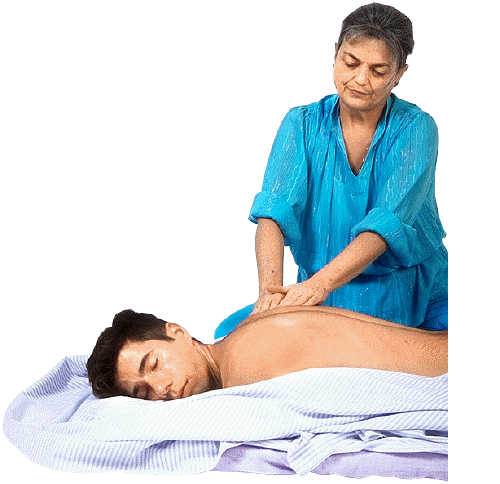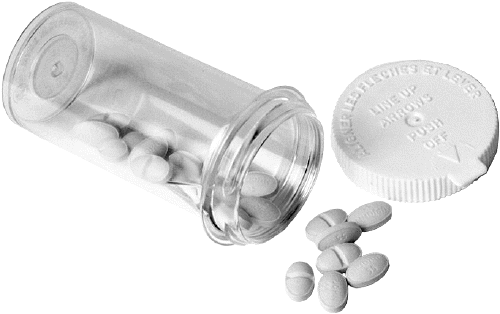|
 Knowledge gives a person many options for managing arthritis and
they can then personally take charge of the effect this disease is having on their life.
Knowledge gives a person many options for managing arthritis and
they can then personally take charge of the effect this disease is having on their life. |
| Return to Main Arthritis Page | |
Nutrient |
Product Suggestion | |
Vitamins:
|
OA-Kit |
Nutrient Cofactors:
|
The terms "osteoarthritis" and "rheumatoid arthritis" are not interchangable. Osteoarthritis is a degenerative joint condition from lack of nutrients that the body needs to maintain optimal joint health. This happens because of both of the following conditions:
 1) a dysfunctional digestive system is not breaking down foods or absorbing the nutrients; or
1) a dysfunctional digestive system is not breaking down foods or absorbing the nutrients; or
2) the diet just doesn't contain adequate or optimal quantities of the appropriate nutrients.
Rheumatoid Arthritis and the associated AS occur because of the body producing antibody-antigens that wrongly attack and damage specific body areas.
Because of these major differences between the development and damage process of osteoarthritis, and that of rheumatoid arthritis, you may see some benefits from supplementation with glucosamine sulfate, but there is a high probablity you will have disappointingly limited results.
Shark Cartilage is not recommended for arthritis
Take a free-form amino acid complex regularly to help repair tissue.
Individuals taking drugs may need additional supplementation. In one study,
the people with rheumatoid arthritis were found to have lower blood levels of
folic acid, protein, and zinc than healthy persons. The researchers concluded that
drugs prescribed for arthritis had brought about biochemical changes in the subjects' bodies,
increasing their a need for certain nutrients.
Note that in this study they used a supplement form
of essential fatty acids (EFAs); adequate amounts from
food sources is quite difficult. Fish oils leave some individuals with "fish burps". Supplemental EFAs from
flax seed oil, borage oil, or evening primrose oil
are highly recommended. Butter, vegetable oils,
shortening, margarine, etc., provide NO EFAs!
Eating deep-sea fish, which are rich in eicosapentaenoic acid (EPA) and docosahexaenoic acid (DHA), was found to help relieve the symptoms of rheumatoid arthritis in a study conducted by Charles Dinarello, M.D., of the Tufts University School of Medicine. Albany Medical College researcher Joel M. Kremer conducted a study in which 20 people with rheumatoid arthritis were given daily doses of 15 capsules of MaxEPA, a fish oil concentrate, and 20 were given a placebo. After 14 weeks, the groups were switched. The people taking the fish oil reported only about half as many tender joints as the placebo group. The fish oil also slowed the onset of fatigue.
 Eat fresh pineapple frequently. Bromelain, an enzyme found in pineapple, is excellent for reducing inflammation. To be effective, the pineapple must be fresh, as freezing and canning destroy enzymes.
Eat fresh pineapple frequently. Bromelain, an enzyme found in pineapple, is excellent for reducing inflammation. To be effective, the pineapple must be fresh, as freezing and canning destroy enzymes.
Eat more sulfur-containing foods, such as asparagus, eggs, garlic, and onions.
Sulfur is a cofactor nutrient for the repair and rebuilding of bone, cartilage, and connective tissue, and aids in the absorption of calcium.
The terms "osteoarthritis" and "rheumatoid arthritis" are not interchangable. Osteoarthritis is a degenerative joint condition from lack of nutrients that the body needs to maintain optimal joint health. This happens because of both of the following conditions:
 1) a dysfunctional digestive system is not breaking down foods or absorbing the nutrients; or
1) a dysfunctional digestive system is not breaking down foods or absorbing the nutrients; or
2) the diet just doesn't contain adequate or optimal quantities of the appropriate nutrients.
Rheumatoid Arthritis and the associated AS occur because of the body producing antibody-antigens that wrongly attack and damage specific body areas.
Because of these major differences between the development and damage process of osteoarthritis, and that of rheumatoid arthritis, you may see some benefits from supplementation with glucosamine sulfate, but there is a high probablity you will have disappointingly limited results.
Shark Cartilage is not recommended for arthritis
Take a free-form amino acid complex regularly to help repair tissue.
Individuals taking drugs may need additional supplementation. In one study, the people with rheumatoid arthritis were found to have lower blood levels of folic acid, protein, and zinc than healthy persons. The researchers concluded that drugs prescribed for arthritis had brought about biochemical changes in the subjects' bodies, increasing their a need for certain nutrients.
| Note that in this study they used a supplement form of essential fatty acids (EFAs); adequate amounts from food sources is quite difficult. Fish oils leave some individuals with "fish burps". Supplemental EFAs from flax seed oil, borage oil, or evening primrose oil are highly recommended. Butter, vegetable oils, shortening, margarine, etc., provide NO EFAs! |
Eating deep-sea fish, which are rich in eicosapentaenoic acid (EPA) and docosahexaenoic acid (DHA), was found to help relieve the symptoms of rheumatoid arthritis in a study conducted by Charles Dinarello, M.D., of the Tufts University School of Medicine. Albany Medical College researcher Joel M. Kremer conducted a study in which 20 people with rheumatoid arthritis were given daily doses of 15 capsules of MaxEPA, a fish oil concentrate, and 20 were given a placebo. After 14 weeks, the groups were switched. The people taking the fish oil reported only about half as many tender joints as the placebo group. The fish oil also slowed the onset of fatigue.
 Eat fresh pineapple frequently. Bromelain, an enzyme found in pineapple, is excellent for reducing inflammation. To be effective, the pineapple must be fresh, as freezing and canning destroy enzymes.
Eat fresh pineapple frequently. Bromelain, an enzyme found in pineapple, is excellent for reducing inflammation. To be effective, the pineapple must be fresh, as freezing and canning destroy enzymes.
Eat more sulfur-containing foods, such as asparagus, eggs, garlic, and onions. Sulfur is a cofactor nutrient for the repair and rebuilding of bone, cartilage, and connective tissue, and aids in the absorption of calcium.
Lifestyle Changes
Diet is also a factor both in the cause of rheumatoid arthritis and ankylosing spondylitis and in daily managing the condition. A therapeutic fast or elimination diet followed by a monitored reintroduction of foods to identify allergenic foods, will help you isolate problematic foods (the most common problem foods are wheat, corn, milk and other dairy products, beef, tomatoes, potatoes, peppers, tobacco). Identified problems should be eliminated if possible. A diet rich in fresh fruits and vegetables and fiber, which is low in sugar, meat, refined carbohydrates, and animal fats.
 Despite recent scientific evidence that regular physical activity has significant
physical and mental health benefits (such as outlined in the 1996 Surgeon
General's Report on Physical Activity and Health), millions of Americans remain
physically inactive.
Despite recent scientific evidence that regular physical activity has significant
physical and mental health benefits (such as outlined in the 1996 Surgeon
General's Report on Physical Activity and Health), millions of Americans remain
physically inactive. Findings of CDC research using the National Health Interviews Survey of about 120,000 Americans, indicate that persons with arthritis and other rheumatic conditions are significantly less active than the populations as a whole. The rates of physical activity among people with arthritis may be lower because of the mistaken recommendations in the past that they should not exercise because it would damage their joints. The level of pain that movement causes is also an issue.
Spend time outdoors for fresh air and sunshine. Exposure to the sun prompts the synthesis of vitamin D, which is needed for proper bone formation.
The research indicated that persons with arthritis and other rheumatic conditions were significantly more likely to report no leisure time physical activity at all, and had significantly lower rates of vigorous physical activity.
The Surgeon General's Report on Physical Activity and Health found for persons with osteoarthritis (a degenerative joint disease) that "regular physical activity is necessary for maintaining normal muscle strength, joint structure, and joint function...and was not associated with joint damage or development of osteoarthritis and may beneficial for many people with arthritis." Other studies have found that persons with arthritis have experienced improvement in muscle function and other important health benefits from exercise training. This was true even for older adults with arthritis.
 Get regular moderate exercise. Exercise is essential for reducing
pain and retarding joint deterioration. Regular activity that does not put
stress on affected joints, but that strengthens surrounding bones, muscles,
and ligaments, is valuable for many types of arthritis. Bicycle riding,
walking, and water exercises are good choices. Avoid weight-bearing or
impact exercises.
Get regular moderate exercise. Exercise is essential for reducing
pain and retarding joint deterioration. Regular activity that does not put
stress on affected joints, but that strengthens surrounding bones, muscles,
and ligaments, is valuable for many types of arthritis. Bicycle riding,
walking, and water exercises are good choices. Avoid weight-bearing or
impact exercises.People with arthritis should see their doctor or physical or occupational therapist prior to increasing their level of physical activity. Both patients and health care providers can get advice and help from the Arthritis Foundation by calling toll-free at 18002837800, or by accessing their Internet site at http://www.arthritis.org
For relief of pain, try using cold gel packs. These retain cold for long periods when frozen. Place them on inflamed joints. Alternate with applications of heat.
Hot tubs and baths may provide relief. Raw lemon rubs and hot castor oil packs are also extremely beneficial. To make a hot castor oil pack, place castor oil in a pan and heat but do not boil it. Dip a piece of cheesecloth or other white cotton material into the oil until the cloth is saturated. Apply the cloth to the affected area and cover it with a piece of plastic that is larger in size than the cotton cloth. Place a heating pad over the plastic and use it to keep the pack warm. Keep the pack in place for one-half to two hours, as needed.
In the morning, take a hot shower or a bath to help relieve morning stiffness.
If you are overweight, lose the excess pounds. Being overweight can cause and aggravate osteoarthritis.
Silicone gel breast implants and other silicone prostheses may cause arthritis-like symptoms, such as swelling of joints, contractures, fever, chronic fatigue, and pain. Silicone has also been known to trigger such severe autoimmune diseases as scleroderma and lupus. In a study at the University of California in Davis, sixteen of forty-six women with implants had antibodies that attacked collagen, whereas in a group of forty-five women without implants, only four had the antibodies. Some women have seen arthritic symptoms disappear after having the implants removed, but this is not true in all cases. Get them removed! It is obviously not worth the risk.
Medical Options and Precautions
 The "AMA Encyclopedia of Medicine" states there is no curative treatment but a program of heat, massage, and supervised exercise is essential to keep back muscles strong and to prevent curvature; they also advise lying face down during the night. We feel this advice is good, but it is obviously missing any discussion of beneficial nutritional factors.
The "AMA Encyclopedia of Medicine" states there is no curative treatment but a program of heat, massage, and supervised exercise is essential to keep back muscles strong and to prevent curvature; they also advise lying face down during the night. We feel this advice is good, but it is obviously missing any discussion of beneficial nutritional factors.The book "The Arthritis Cure " specifically expounds the highly successful benefits of glucosamine sulfate and chondroitin sulfate in many areas of the world in the treatment of "osteoarthritis" and specifically points out that "rheumatoid arthritis" is not within the scope of their studies. Most likely you may have heard of these "osteoarthritis" benefits from this book or other sources, and not understanding the difference between osteoarthritis and rheumatoid arthritis, made a decision to supplement with glucosamine sulfate.
Standard medical therapy is of limited value in most cases of rheumatoid arthritis (RA) and ankylosing spondylitis (AS), as it fails to address the complex underlying causes of the disease.
[Encyclopedia of Natural Medicine, 1998, p. 770-789.] Aspirin is the first choice, but the high dosage required is often accompanied by toxicity symptoms of tinnitus (ringing in the ear) and gastric irritation. Other nonsteroidal anti-inflammatory drugs (NSAIDs) like ibuprofen, Motrin, Advil, Nuprin, Feldene, Voltaren, Nalfon, Indocin, Naprosyn, Tolectin, and Clinorial are more powerful in their effect, but also have been proven to ACCELERATE the factors that promote the RA or AS disease process. Unfortunately, these drugs also can have side effects. At least 1 in 100 people who take NSAIDs on a regular basis for arthritis develops stomach ulcers or experiences severe gastrointestinal bleeding--effects that are
potentially very dangerous.
Aspirin is the first choice, but the high dosage required is often accompanied by toxicity symptoms of tinnitus (ringing in the ear) and gastric irritation. Other nonsteroidal anti-inflammatory drugs (NSAIDs) like ibuprofen, Motrin, Advil, Nuprin, Feldene, Voltaren, Nalfon, Indocin, Naprosyn, Tolectin, and Clinorial are more powerful in their effect, but also have been proven to ACCELERATE the factors that promote the RA or AS disease process. Unfortunately, these drugs also can have side effects. At least 1 in 100 people who take NSAIDs on a regular basis for arthritis develops stomach ulcers or experiences severe gastrointestinal bleeding--effects that are
potentially very dangerous.The use of NSAIDs to treat RA and AS is shown to be a significant cause of serious gastrointestinal tract reactions, including ulcers, hemorrhage, and perforation. Approximately 20,000 hospitalizations and 2,600 deaths occur each year due to the use of NSAIDs in treating individuals with rheumatoid arthritis.
[J.F. Fries et al., "Toward an Epidemiology of Gastropathy Associated with Nonsteroidal Anti-inflammatory Drug Use," Gastroenterology 96 (1989) p. 647-655. and R. Jenkins, et al. "Increased Intestinal Permeability in Patients with Rheumatoid Arthritis: A Side Effect of Oral Nonsteroidal Anti-Inflammatory Drug Therapy?" British Journal of Rheumatology. v.26 (1987) p.103-107.]Abnormal bowel function is thought to be one of the "triggers" that causes RA or AS to become activated. Individuals with RA have increased intestinal permeability (also referred to as leaky gut) to dietary and bacterial components (antigens) against which the body forms antibodies.
[M. D. Smith, et. al. "Abnormal Bowel Permeability in Ankylosing Spondylitis and Rheumatoid Arthritis." Journal of Rheumatology vol 12 (1985) p.299-305.]Intake of any medicines--prescription or over-the-counter--that can worsen this "leaky gut" condition is obviously ill advised.
 The U.S. Food and Drug Administration recently
estimated that as many as 200,000 cases of gastrointestinal bleeding,
including 10,000 to 20,000 deaths, occur each year in the United States as
a result of nonsteroidal anti-inflammatory (NSAID) drugs prescribed for arthritis.
That converts to a 5% to 10% chance of DEATH. These drugs can also cause
kidney or liver damage. According to a study reported in Annals of Internal Medicine,
the use of NSAIDs can lead to serious health problems if you have even mild kidney dysfunction.
The U.S. Food and Drug Administration recently
estimated that as many as 200,000 cases of gastrointestinal bleeding,
including 10,000 to 20,000 deaths, occur each year in the United States as
a result of nonsteroidal anti-inflammatory (NSAID) drugs prescribed for arthritis.
That converts to a 5% to 10% chance of DEATH. These drugs can also cause
kidney or liver damage. According to a study reported in Annals of Internal Medicine,
the use of NSAIDs can lead to serious health problems if you have even mild kidney dysfunction.If you use ibuprofen, or other nonsteroidal anti-inflammatory drugs (NSAIDs), avoid sodium (salt), which causes water retention. Spread doses of these medications out through the day, take them only after eating, and take an antacid an hour after taking the drug. Ask your health care provider about a protective agent to take along with the NSAID, especially if you are over sixty-five or have had previous gastrointestinal bleeding.
Acetaminophen (sold as Tylenol, Datril, and others) may be a better medication for osteoarthritis than NSAIDs or Aspirin. In many cases, it may be able to relieve the pain of osteoarthritis as well as ibuprofen. Acetaminophen is relatively safe and inexpensive. However, it is important not to exceed the recommended dose of acetaminophen, and it should not be used by persons who consume alcohol. If taken in excessive amounts or in combination with alcohol, the drug can cause liver damage.
Researchers are currently looking at an ointment containing the immunosuppressant drug cyclosporing, which is used in transplant patients to prevent rejection of the transplanted organ, as a treatment for a variety of autoimmune diseases, including rheumatoid arthritis. Using the ointment form of cyclosporine apparently lessens the potentially hazardous side effects this drug has when administered by mouth or by injection, such as kidney damage and reduced resistance to infection.
Diclofenac sodium (Voltaren), a drug often prescribed for arthritis, may cause serious liver problems in some cases. People who take it should be monitored very carefully. If this medication is prescribed, the physician should perform a blood liver enzyme study to determine whether there is a risk of side effects. This test should be done within eight weeks after the beginning of treatment.
Drugs do not always help everyone. Some people who use drugs obtain only partial relief.